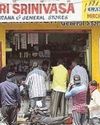
The Monetary Policy Committee (MPC) at its meeting on Thursday unanimously resolved to keep the policy repo rate unchanged at 5.15 per cent. In line with market expectations, at its sixth and last bi-monthly for the financial year, it was resolved that the accommodative stance would continue to revive growth with the inflation rate at the targeted level of 4 per cent, +/- 2 per cent. Thus, the monetary policy has run its full course for the current fiscal with a policy repo rate reduction by 110 basis points or bps (135 bps including the February 2019 rate reduction). The question in this context is: has the front-loading approach of rate reduction, coupled with the accommodative stance, been helpful in activating the desired non-inflationary growth trajectory?
The Indian economy has been witnessing a weakening real economic growth measured in terms of GDP at constant prices (base year 2011-12), with accelerating retail inflation measured in terms of Consumer Price Index (Combined). In the December 2019 print, retail inflation was at 7.35 per cent on a year-on-year basis with a high food inflation component of 12.2 per cent.
Core inflation (excluding food and fuel) was higher at 3.8 per cent in December 2019 than that of 3.4 per cent in October 2019. Household inflation expectations, as evident from the January 2020 round of the RBI survey, declined by 60 bps and 70 basis points, respectively, for a three-month and one-year horizon.
Economic projections
Denne historien er fra February 07, 2020-utgaven av The Hindu Business Line.
Start din 7-dagers gratis prøveperiode på Magzter GOLD for å få tilgang til tusenvis av utvalgte premiumhistorier og 9000+ magasiner og aviser.
Allerede abonnent ? Logg på
Denne historien er fra February 07, 2020-utgaven av The Hindu Business Line.
Start din 7-dagers gratis prøveperiode på Magzter GOLD for å få tilgang til tusenvis av utvalgte premiumhistorier og 9000+ magasiner og aviser.
Allerede abonnent? Logg på

Covid Presents An Opportunity For India
India must attract investors exiting China post-Covid. Streamlining of project clearances and relaxation in FRBM norms will help

Did Alternative Assets Shield You From Covid-19 Volatility?
The assets closely linked to stock and debt markets could not stave off the losses

How To Put Aircraft To Bed
Preserving grounded planes, to get them up and flying at short notice, is a challenging task. Ashwini Phadnis captures the process

There Can Be No Going Back On WFH
Covid-19 has fast-forwarded the shift to ‘work from home’. However, some face-to-face connect will always be needed

UN, WHO Urged To Ensure ‘Benefit Sharing' Of Covid-Related Data
Biopharma firms should reach vaccines, medicines to poor nations at an affordable price, say civil society bodies

With No Clear Signal From Rlys, States Explore Ways To Bring Back Migrants
Quarantine centres, cross-country buses being arranged even as migrants hop on to boats, trucks and ambulances

Centre Allows All Neighbourhood Shops To Open But With Riders
Final call will be taken by local authorities; shopping complexes that draw fewer ‘outsiders’ are permitted to operate

Covid Impact Relatively Muted In India
Compared to Italy and the US, India’s rate of infection spread has been slow. This can be attributed to the strict measures in place

How Global Trade Will Fare Post-Covid
China isn’t likely to lose its pre-eminent position soon. India, for one, will need to make manufacturing globally competitive

How To Curb Harassment In The Virtual Office
Training and sensitisation are essential. Institute a strict dress code and chat etiquette to ensure professionalism during video calls